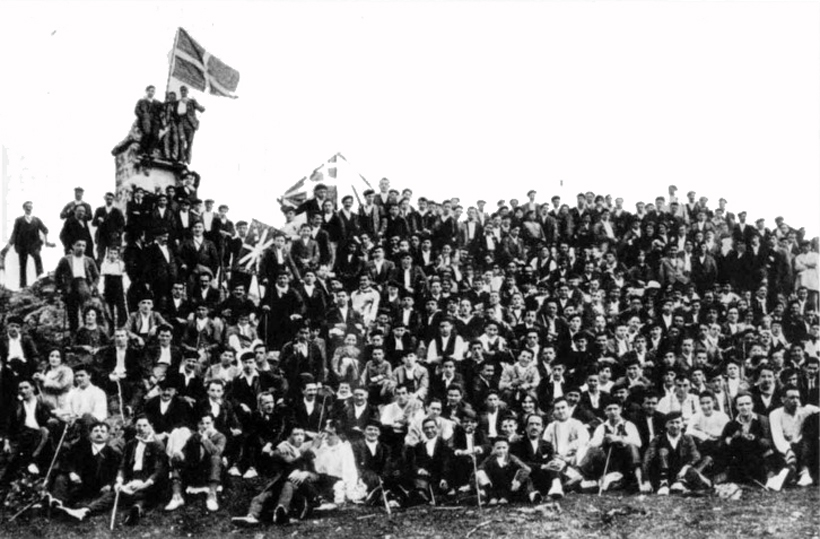
- Arrate (Eibar, Gipuzkoa) 3 April 1921. A large number of nationalists and mountaineers (18 groups from Bizkaia, 10 from Gipuzkoa and one from Álava), following the construction of the Kalamuan summit, met in Arrate, where the Basque Union Mendigoixale officially emerged.

On the occasion of the centenary, a few weeks ago Iñaki García Uribe, a researcher of the Basque mountaineering and a member of Aranzadi, explained at a conference organized by the Sabino Arana Foundation, the details of the peculiar group of mountaineers.
The WMS soon gained great strength. In the absence of concrete data from all territories, we know that 10 years after its creation, when the Bizkaia Mountain Board held its assembly in Betsaid, the Bizkaia section of the association consisted of 40 subgroups and more than 1,000 partners. The following year, Jagi-Jagi Magazine was created, promoted by the mountaineers, who distributed 20,000 weekly spins. That same year, in 1932, the first Aberri Eguna was held in Bilbao, in which nearly 5,000 members of the WMS were filmed in uniform.
Three years after the creation of the WMS, the Basque Mountain Federation was founded in May 1924 in Elgeta. But the fact that the BSE was founded before does not mean that Basque mountaineering was born alongside the mountaineers, who were the pioneers. The first chronicles on an organized group of Basque mountaineers date back to 1877, which they called Ganekogortoak. And when the federation was founded, three groups of Álava, 5 of Navarre, 30 of Gipuzkoa and 36 of Bizkaia, previously organized, met.
The mountain abertzales were not born suddenly at the birth of the WMS either; in 1908 we already know some mountain groups organized by the PNV that travelled neighborhoods and hamlets to spread the doctrine of Sabino Arana.
Political mountaineering and sports mountaineering were therefore being organised in parallel, but not mixed. The members of the WMS were not, technically, “mountaineers”, they did not have the high mountains to which they aspired and acted a few meters below, expanding nationalist ideas on excursions, distributing leaflets and magazines, organizing mitts… Political avatars also affected them: The internal divisions of the PNV also brought divisions between the mountains and the war gave a great beating to the association, to the point of extinguishing what had emerged a century ago.
Sabino Arana’s biographer, Ceferino Jemein Keperin (1887-1965), considered Sabino himself and his brother Luis as the first “hills”, despite Sabino’s death in 1903. And he defined the members of the BMS in two words: the mountaineers for nationalism. Because mountain was not an objective, but a political instrument.